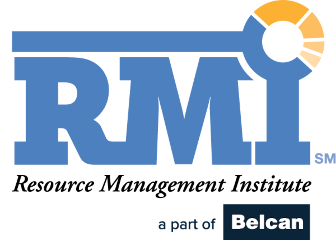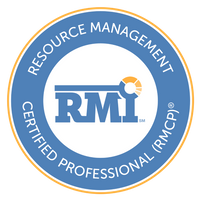In today’s rapidly evolving business landscape, effective resource management has become a cornerstone of organizational success. As companies strive to stay competitive, they must carefully navigate the complexities of resource allocation and optimization. To help with your journey towards resource management excellence, here are a few tools and tips:
RM Maturity Model
A proven method for making steady and important progress in building your Resource Management maturity model should start with assessing where you are today – your baseline. From there you can make plans for, and begin, your transformation efforts. The RMI’s Resource Management Maturity Model was built for this purpose. It is structured based upon our Just-in-Time Resourcing® process solution and encompasses models tailored for both Organizations Serving External Clients and Internal Enterprise Organizations. Within these extensive models, we pinpoint the crucial functional components of resource management. An effective and mature resource management function is a sum of all these parts. These maturity models serve as a valuable tool to discern the strengths and weaknesses unique to your company’s resource management practices.
Soft Skills: The Essential Ingredient
Resource management is not just about numbers and spreadsheets; it’s fundamentally a people-oriented task. While technological advancements have undoubtedly transformed the landscape of resource management, it’s becoming increasingly evident that interpersonal skills are gaining paramount significance in this evolving field. The growing importance of soft skills, such as communication, empathy, and collaboration, are becoming indispensable for resource management professionals. Soft skills can add significant value to key stakeholders and elevate resource management to the status of a strategic partner within organizations, bridging the gap between technological advancements and human relationships.
Adaptive Resource Management
Adaptive resource management is a paradigm shift from traditional, static approaches. It emphasizes the need to balance the demand for speed with strategic resourcing for future competitiveness. This approach recognizes that in today’s dynamic business environment, rigid allocation models can hinder an organization’s ability to respond to changing market conditions.
Resource managers need to be agile and adaptable, capable of reallocating resources quickly when necessary while also maintaining a long-term strategic focus. This agility ensures that companies remain competitive in an environment where agility is often the key to survival.
Technology Enablement
In today’s digital age, technology is a critical aspect of any RMO. Advanced software and analytics platforms can provide resource managers with real-time insights into resource utilization, demand forecasting, and capacity planning. These tools streamline decision-making processes and empower resource managers to make data-driven choices.
Moreover, technology enables collaboration and transparency within an organization, helping resource managers communicate resource allocation decisions effectively across departments and teams. It also allows for scenario planning, helping organizations prepare for various contingencies.
The Role of Change Management in Building RMO Credibility
Change management plays a pivotal role of ensuring the success of a Resource Management Office within an organization. To establish credibility and trust and garner support across the organization, it is essential to leverage best practices in change management while understanding human psychology. Effective change management begins with clear communication and transparency.
Involving employees in the change process and seeking their input can not only foster a sense of ownership and engagement, but it can also yield considerably better solutions. It is important to cultivate champions within the organization, measure and showcase the RMO’s impact, and remain open to feedback for continuous improvement. By combining change management strategies with an understanding of human behavior, RMOs can accelerate their impact, gain stakeholder buy-in, and foster user adoption effectively.
In conclusion, the path to resource management excellence is paved with innovation and adaptability. We’ve explored key tools and tips, from the RM Maturity Model to the growing importance of soft skills, adaptive resource management, and technology enablement. Yet, the cornerstone of success remains change management—ensuring that the journey towards resource management excellence aligns with the organization’s needs and its people’s aspirations. By embracing these principles, resource management professionals have the power to transform their organizations, bridge the gap between technology and humanity, and chart a course towards sustained success in the dynamic business world of today and tomorrow.




